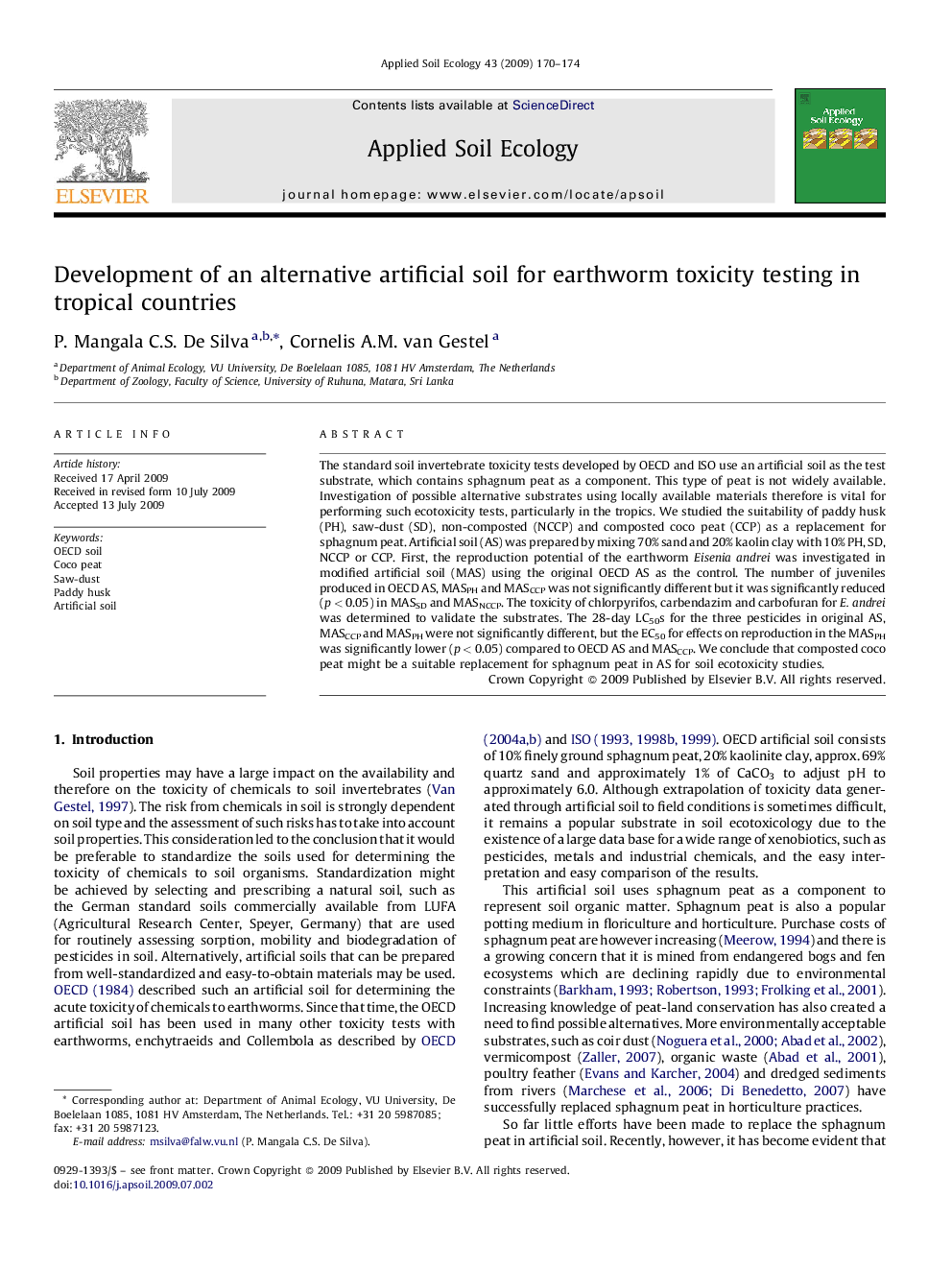| Article ID | Journal | Published Year | Pages | File Type |
|---|---|---|---|---|
| 4383061 | Applied Soil Ecology | 2009 | 5 Pages |
The standard soil invertebrate toxicity tests developed by OECD and ISO use an artificial soil as the test substrate, which contains sphagnum peat as a component. This type of peat is not widely available. Investigation of possible alternative substrates using locally available materials therefore is vital for performing such ecotoxicity tests, particularly in the tropics. We studied the suitability of paddy husk (PH), saw-dust (SD), non-composted (NCCP) and composted coco peat (CCP) as a replacement for sphagnum peat. Artificial soil (AS) was prepared by mixing 70% sand and 20% kaolin clay with 10% PH, SD, NCCP or CCP. First, the reproduction potential of the earthworm Eisenia andrei was investigated in modified artificial soil (MAS) using the original OECD AS as the control. The number of juveniles produced in OECD AS, MASPH and MASCCP was not significantly different but it was significantly reduced (p < 0.05) in MASSD and MASNCCP. The toxicity of chlorpyrifos, carbendazim and carbofuran for E. andrei was determined to validate the substrates. The 28-day LC50s for the three pesticides in original AS, MASCCP and MASPH were not significantly different, but the EC50 for effects on reproduction in the MASPH was significantly lower (p < 0.05) compared to OECD AS and MASCCP. We conclude that composted coco peat might be a suitable replacement for sphagnum peat in AS for soil ecotoxicity studies.
